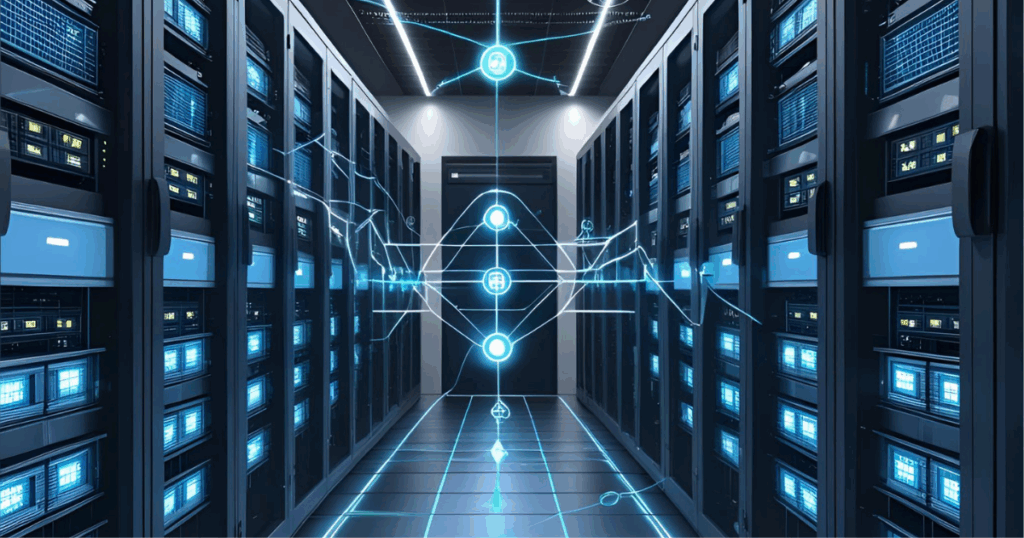Tips For Organizations’ Network Security

As a company grows, the amount of data it handles daily grows as well. Some of the most valuable information can include customer or employee personally identifiable information (PII), and the company’s intellectual property (IP), and other proprietary information. With a majority of businesses handling their data on a laptop connected to Wi-Fi or a Wireless LAN, it’s important to make sure that the data is safe and secure at all times.
If you are worried about your data being lost and not having reliable disaster recovery solutions in place or being compromised by threat actors, you need to understand how you can go about keeping it safe. Information is one of your most important assets, and a breach of network security could have damaging consequences, including reputational damage, loss of revenue, recovery costs, and, depending on the type of data impacted, there could be legal fees and financial penalties. Worrying about these risks is natural, but you can take measures to improve the security of your company’s network.
1. Create a network security culture and policy in the company
Talking about network security to your employees helps, but it isn’t sufficient. You must formalize your stance by preparing an official document containing network security policies. This clear and comprehensive document would serve as a handbook for all your employees to follow regularly and refer to whenever they doubt how to proceed. Conduct regular training sessions to make sure that your employees can identify important data assets and risky behavior and know how to proceed in case something unforeseen happens.
2. Enforce a strong password policy and RBAC
You will need to get proactive regarding passwords. Enforce a strong password policy and discourage your employees from putting common or simple passwords such as ‘Admin,’ ‘Company Name,’ ‘Password,’ etc. Ask them to keep complex codes that are eight characters or more in length and have at least one uppercase letter, one lowercase letter, one number, and one special symbol.
You should also implement protocols where employees are required to change the password every 90 days or so. Do not allow them to log into their systems if their passwords haven’t been updated after every quarter.
Finally, overly permissive access policies create risk. Role-Based Access Control (RBAC) enables you to create separate user profiles to provide various levels of access to the IT staff, which are only as much as needed for a job.
3. Prevent employees from downloading any software
Not all employees who have access privileges to download a new piece of software on their work computers know network threats. When someone doesn’t know that a particular download could introduce malware or viruses on the computer, the risk increases. This is why you must block employees from installing software from the web and allow only a handful of trusted staff who are well-versed with network threats to download applications and tools.
4. Keep firewalls and other network devices up to date
A firewall is your first line of defense in the case of a network attack. It monitors every suspicious or unauthorized process and blocks potentially risky files from entering into the network. So, it’s important to have a firewall installed for the entire network of your servers.
However, guidance from international cybersecurity governing authorities warns that network infrastructure devices, including firewalls, are often easy targets for attackers. So, it is also important to keep firewalls and other network devices up-to-date because patches often contain security vulnerability fixes. Disaster recovery can be incredibly costly in severe cases, whereas constant prevention by automating firewall updates is low-cost and easily manageable regularly.
5. Use VPNs to encrypt your entire network
Even with high-level authentication, phishing attacks or malware could enter your server and affect numerous systems. All it takes is access to one system and finding an unencrypted channel for a threat actor to steal numerous passwords, documents, data, and more. This is why it’s always a good idea to encrypt vital and sensitive data channels and the entire network itself. Virtual Private Networks (VPNs) are a powerful tool because they create an encrypted, secure internet connection for traffic to pass through and always keep your network and data safe and secure from attacks.
6. Consider hiding your SSID
Service Set Identifier (SSID) can enable someone to find the exact IP address for the systems in your network, which is often the first step in launching a cyberattack. To keep this information private, it’s recommended that you hide your SSID. Go to your wireless LAN’s ‘General Setup’ page and check the box that says ‘Hide SSID.’ The network’s SSID won’t be broadcast anymore, and no one can locate this identifier to target attacks on your company.
7. Remove all login and access credentials of ex-employees
It’s impossible to know an ex-employee’s intentions towards your company. So, you must guarantee that you’re clearing corners by removing all login and access credentials given to them, including disabling all security keys and access codes. This ensures they cannot access crucial information after they’ve formally resigned and prevents a threat actor who may have stolen their credentials from using them to compromise your business. It’s also wise to check the access logs regularly and monitor if there are any activities from ex-employees or other unauthorized personnel.
8. Implement content filters
Implementing content filters is a great tool to block access to malware and unforeseen phishing attacks. This way, you don’t need to identify every URL and malicious site and confirm they are blocked. There are several categories of content filters that you may opt for, such as malware, illegal software, pop-ups, forums and newsgroups, streaming, downloads, social networking, bots, phishing and fraud, spam sites, hacking, and more. It’s an efficient and effective way to block channels more commonly used as pathways into businesses to conduct malicious activity.
Final thoughts
We understand how problematic a network attack can be, and securing your entire company’s network can seem like a big task. However, if you are proactive and can implement a few network security best practices effectively, you can easily prevent your company from numerous phishing attacks, malware, viruses, and other threats.
BackBox can help automate security, compliance, and lifecycle management for your network and security devices, including firewalls, routers, switches, and more. Our intelligent vulnerability prioritization and patching, automated configuration checks and updates, and RBAC audits help you strengthen your network’s cyber resilience.
Want to see what we can do for you? Schedule a 30-minute demo for an interactive tour of the BackBox platform.


